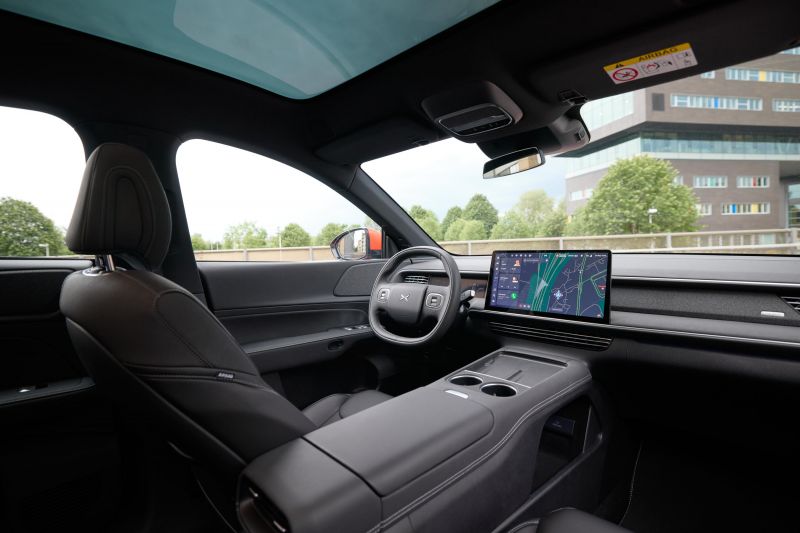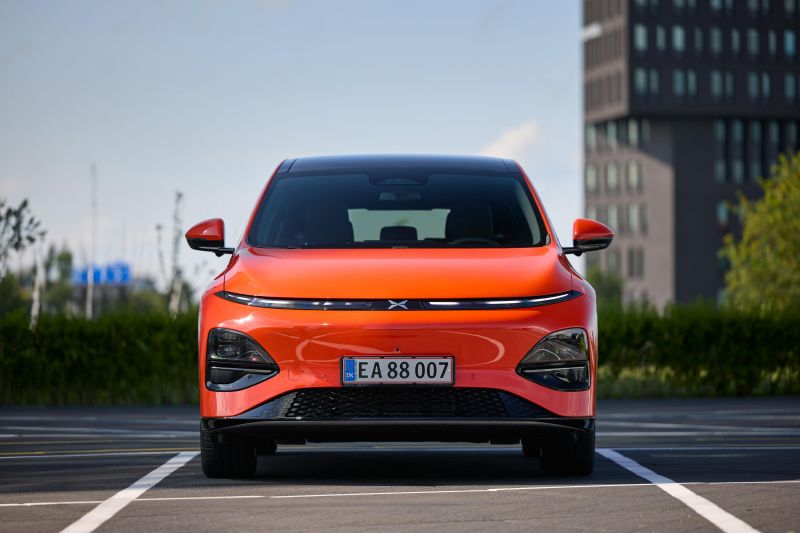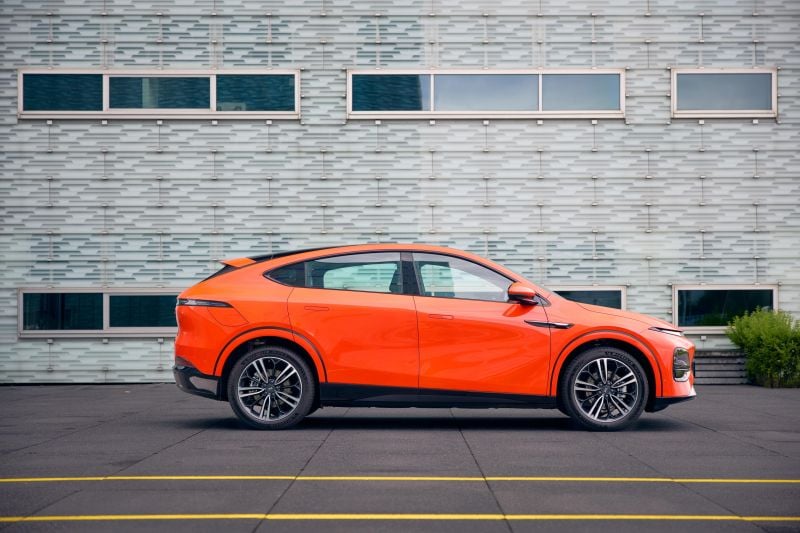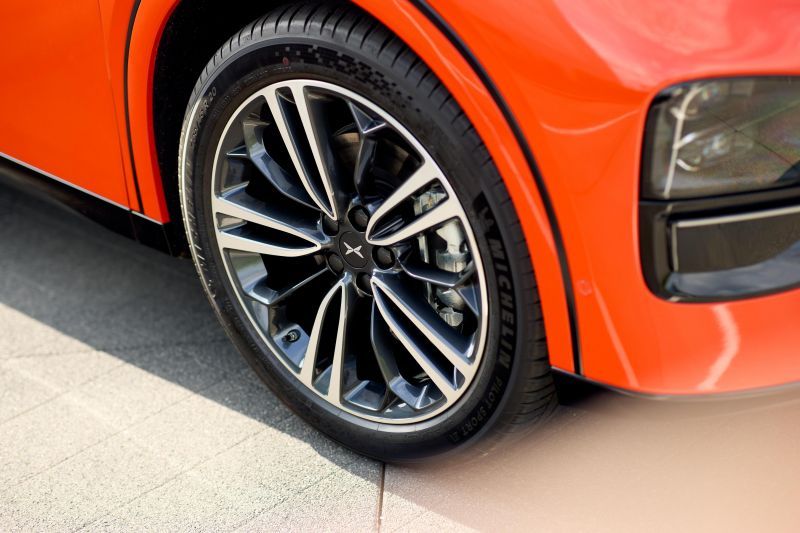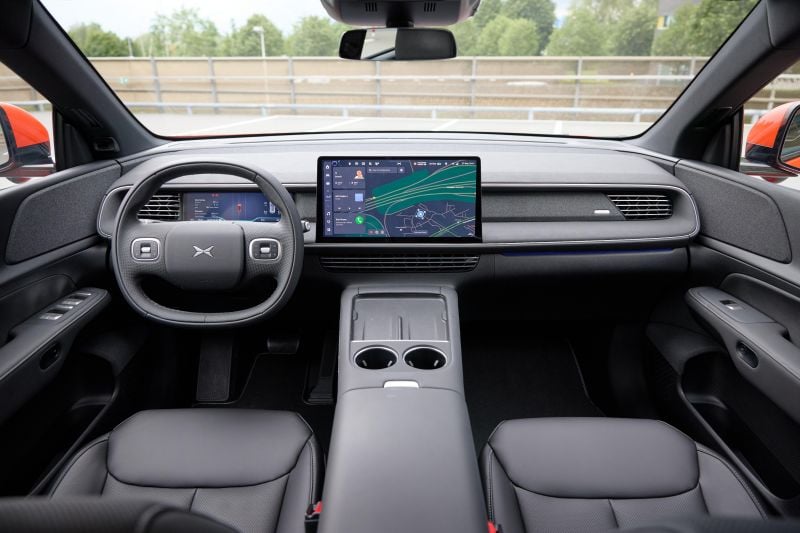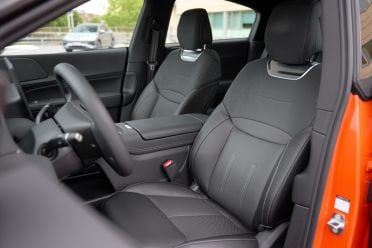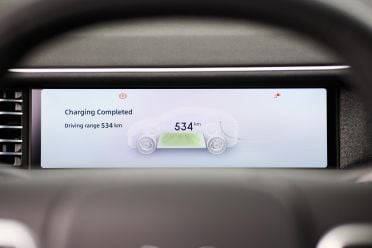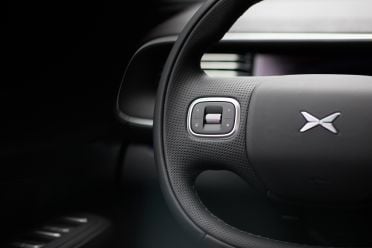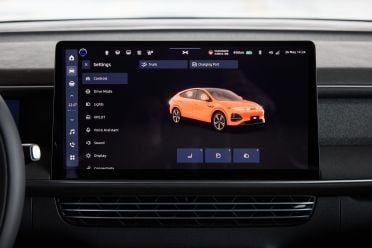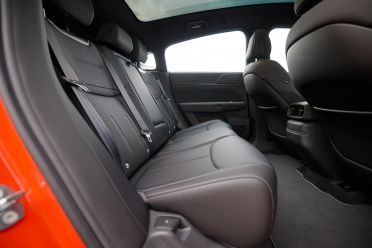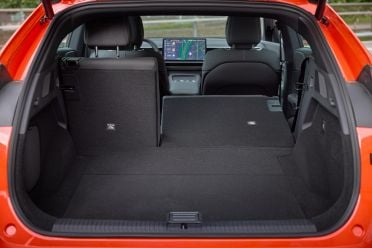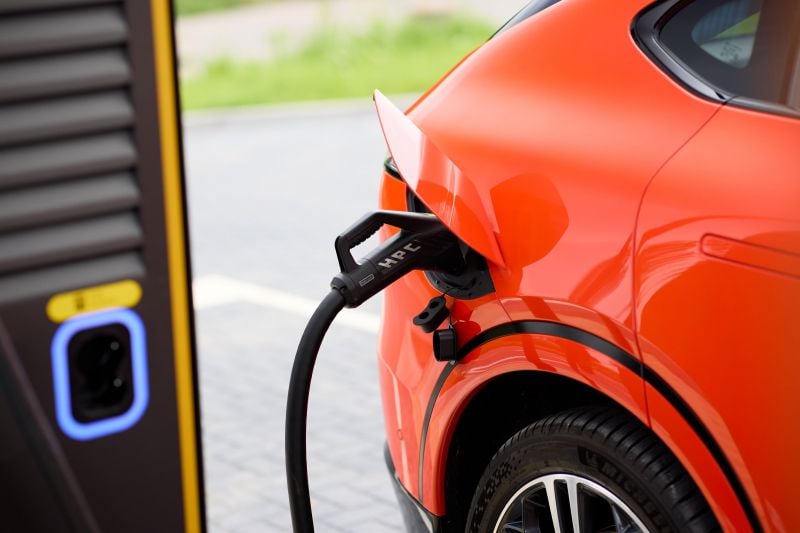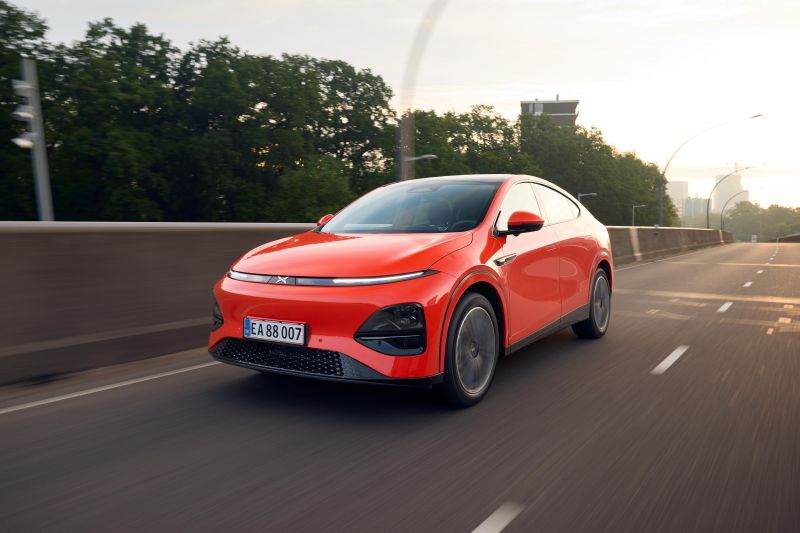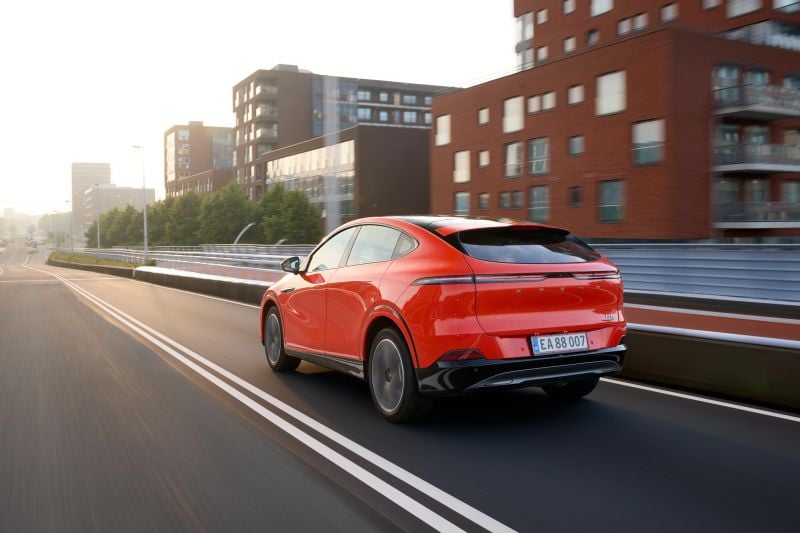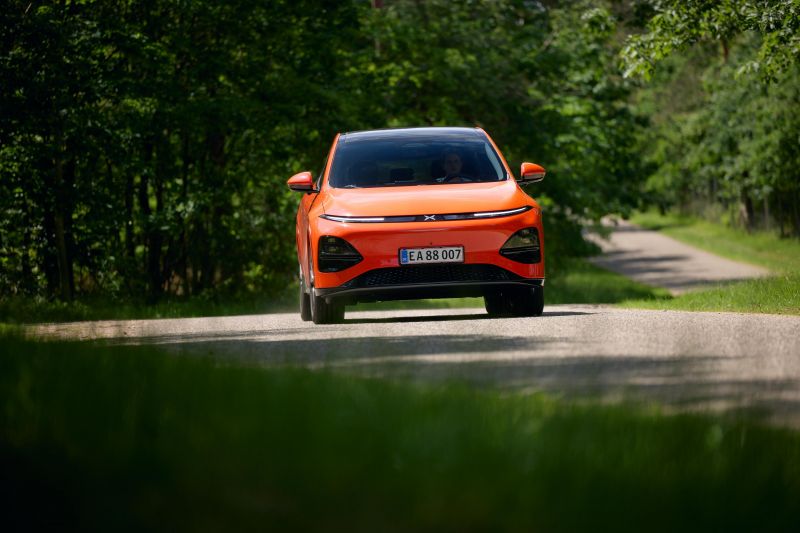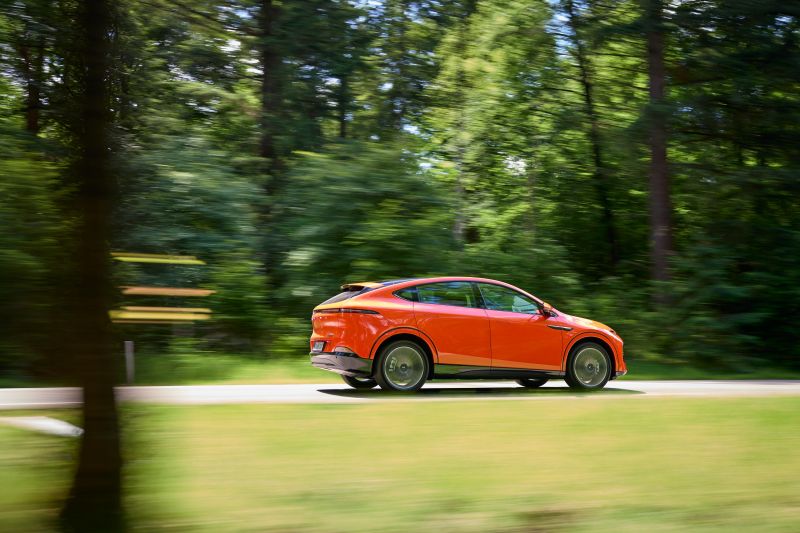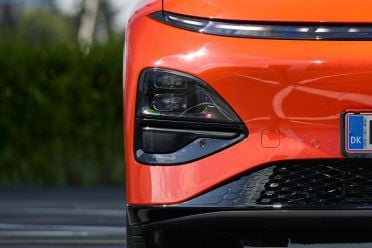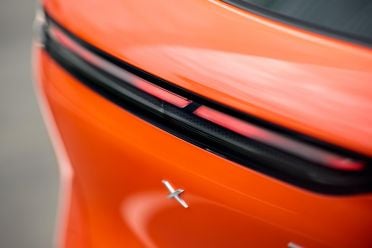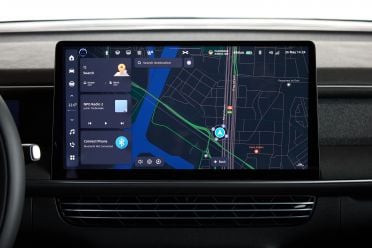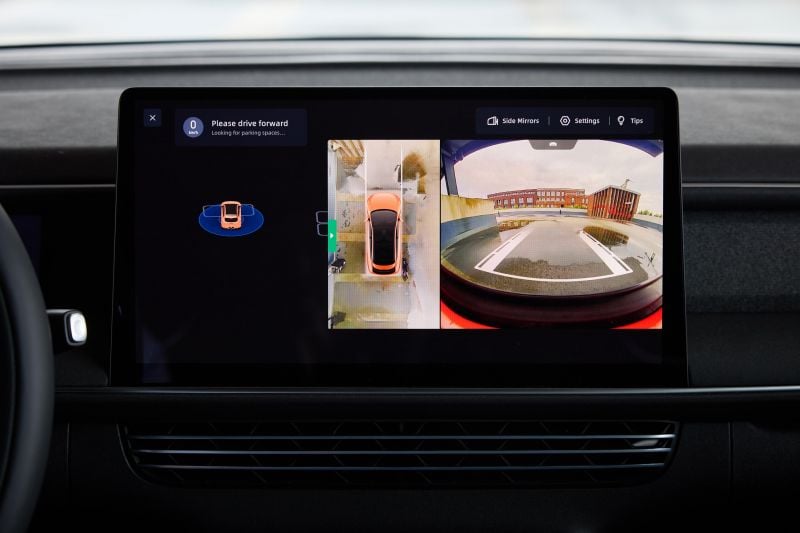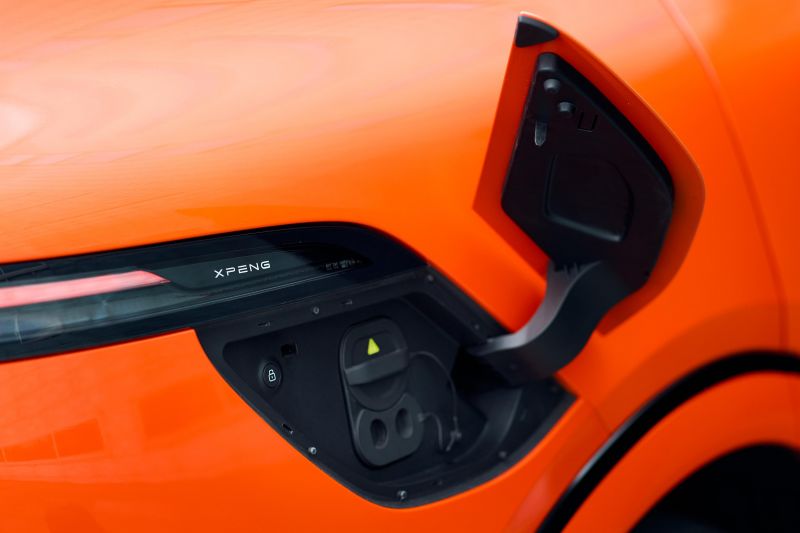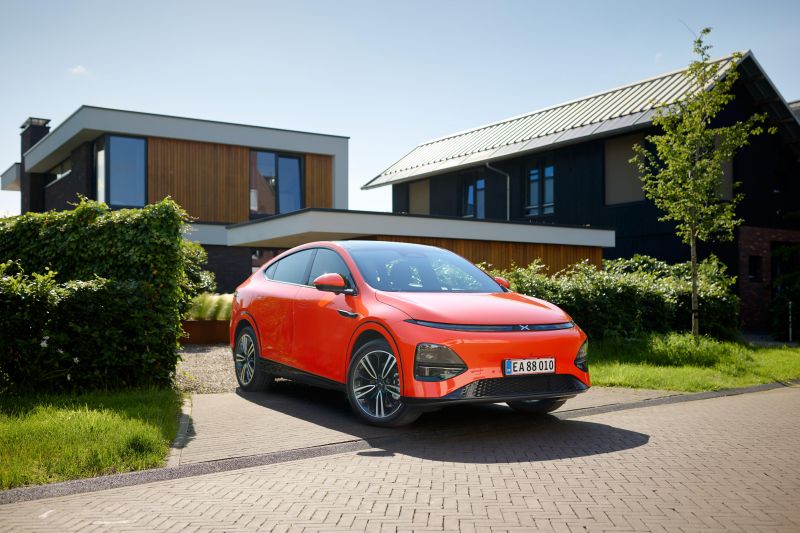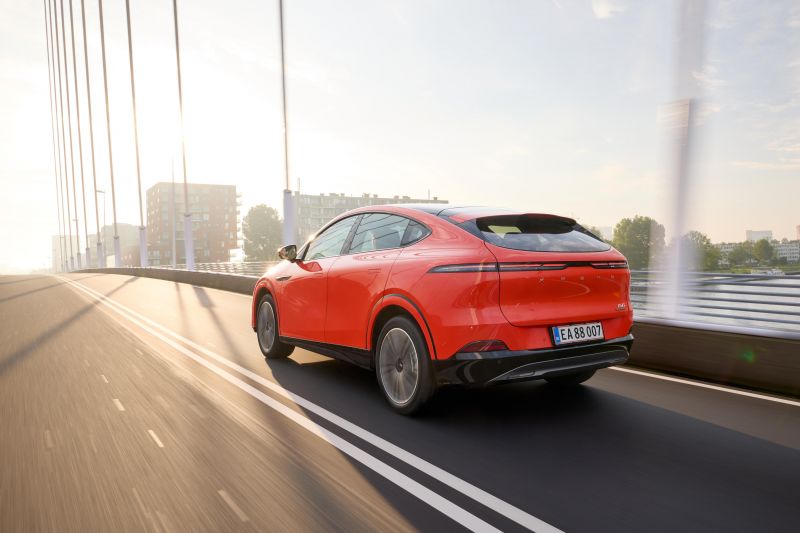Tesla’s Model Y is the best-selling EV in the world. More than 1.2 million were sold last year, which meant this single vehicle alone accounted for 66 per cent of Tesla’s worldwide sales.
Xpeng on the other hand, one of the fast-moving newcomers in the Chinese car industry, has been paying attention. The all-new Xpeng G6 is aimed squarely at Tesla’s cash cow and Elon Musk should be worried.
The G6 is the first vehicle built on Xpeng’s new Smart Electric Platform Architecture (SEPA) 2.0, which is scheduled to underpin a host of new models through the end of this decade.
The company says SEPA 2.0, which incorporates an 800V electrical architecture, is expected to shorten the R&D cycles for future vehicles by 20 per cent. It’s also estimated to cut the cost of integrating advanced driver assistance systems by 75 per cent, and smart infotainment systems by 85 per cent.
A quick tour of the tape measure reveals how tightly focused the G6 is on the Model Y. The Xpeng is within a millimetre of the Tesla in terms of its overall length and width, and the two have identical 2890mm wheelbases.
The only material dimensional difference between the electric SUVs is height, with the Chinese EV standing 26mm taller than its American rival.
The exterior design features good proportions, clean surfaces, and restrained detailing. All of which conspire to give the G6 a subtly sophisticated presence on the road.
Under the skin is Xpeng’s own end-to-end software architecture, Xsmart OS, which supports functions such as Xpeng’s voice-controlled AI assistant, smart navigation, a 3D user interface, and third-party apps.
Xsmart OS also enables the Xpilot 2.5 advanced driver assistance system that’s standard across the G6 lineup. It brings features such as adaptive cruise control, active lane centring, and active lane change functions, as well as other various automatic parking functions.
The system is future-proofed for more advanced autonomous driving capability thanks to the G6’s 12 cameras, 12 ultrasonic sensors, and five high-definition millimeter-wave radar units.

How much does the Xpeng G6 cost?
Australia will only get two of the three G6 models available in Europe and China when it goes on sale here.
Xpeng’s strategy in Europe has been to price G6 models closely against Model Y variants with powertrains of similar performance and range while offering much higher levels of standard equipment for the money.
Australian G6 pricing is not scheduled to be announced until September, but we can expect Xpeng’s local importer, distributor and retailer, TrueEV, to follow Europe’s lead.
On that basis, the entry-level G6 RWD is likely to retail for $55,000 to $60,000, targeting the $55,900 Model Y Rear-Wheel Drive.
The G6 RWD Long Range, as its name suggests, gets a bigger battery that delivers 31 per cent more range is likely to be priced between $65,000 and $70,000 – close to the $69,900 Model Y Long Range All-Wheel Drive.
Compared with the Teslas, both versions of the G6 offer much higher levels of standard equipment. For example, features such as automatic parking, heated and ventilated front seats, as well as 20-inch wheels with Michelin tyres are standard across the range.
TrueEV is currently accepting fully refundable $1000 deposits that will allow customers what it calls ‘priority access’ to secure a G6 when the first examples of the SUV arrive here in the fourth quarter.
To see how the Xpeng G6 lines up against the competition, check out our comparison tool.
What is the Xpeng G6 like on the inside?
The G6’s interior design echoes some of the minimalism that’s become a Tesla trademark.
Drivers do however get a 10.2-inch digital instrument panel behind the standard heated, multifunction steering wheel to complement the 14.9-inch touchscreen at the centre of the dash.
The trim and materials used in the G6’s cabin deliver a less grimly austere ambience than the Model Y.
Like the Tesla there are, annoyingly, no physical controls for functions such as the climate temperature control, fan speed, or vent direction. The touchscreen menu layout however is at least reasonably intuitive to work with.
The power adjustable front seats are heated and cooled, plus they have a memory function.
Despite the relatively fast, almost coupe-like C-pillar, the heated, 60:40-split rear seat offers comfortable accommodation for six-foot-plus adults. There’s ample head-, leg-, and toe room for second-row occupants.
In addition to four USB ports – one Type-A, and three Type-C – there are two 50W inductive charging trays for smartphones in the large centre console.
Two interior colour schemes – black and a very pale grey – are available.
While the steering wheel is trimmed in leather, the seats are trimmed in a highly quality and practical leatherette.
What’s under the bonnet?
The entry-level G6 RWD is powered by a single, rear-mounted e-motor that develops 190kW of power and 440Nm of torque.
The e-motor draws from a 66kWh (net) lithium iron phosphate (LFP) battery that gives the G6 RWD 435km of claimed range under the European WLTP test protocol.
Xpeng claims the G6 RWD, which weighs 2025kg, will accelerate from 0-100km/h in 6.9 seconds en route to an electronically limited top speed of 200km/h.
The G6 RWD Long Range has a 210kW version of the single, rear-mounted e-motor (peak torque is unchanged at 440Nm). It’s fitted with a larger 87.5kWh (net) nickel manganese cobalt (NMC) battery that gives it a WLTP-certified range of 570km.
Xpeng claims a 0-100km/h acceleration time of 6.7 seconds, while top speed is also limited to 200km/h.
Australia misses out on what is arguably the pick of the lineup, the G6 AWD Performance.
This adds a 140kW e-motor on the front axle to deliver an all-wheel drive. It has a total system output of 350kW and 660Nm, and will nail the 0-100km/h sprint in just 4.1 seconds.
The G6 AWD Performance is fitted with the same 87.5kWh (net) battery pack as the RWD Long Range, and despite the extra power and a 95kg increase in weight, boasts a WLTP-certified range of 550km.
To see how the Xpeng G6 lines up against the competition, check out our comparison tool.
How does the Xpeng G6 drive?
Our test drive was limited to the G6 AWD Performance which proved effortlessly rapid in a straight line, especially in Sport mode where it reached its electronically limited 200km/h top speed with surprising alacrity.
But based on that experience we can say the Xpeng G6 offers a good blend of ride, handling, and refinement.
The Xpeng G6 is not going to surprise you in any way, apart from how much more comfortable, coherent, and accomplished it feels than a Peugeot E-3008, for example. It’s a thoroughly decent all-rounder to drive.
There are three drive modes – Standard, Eco and Sport. The G6 AWD Performance also gets an All-Terrain mode that activates the standard hill descent control system, as well as optimises the throttle and brake maps.
Four levels of regen are available. There’s Low, which replicates the lift-off coast down of an internal-combustion engine (ICE) vehicle with an automatic transmission, all the way to X-Pedal, which allows one-pedal driving.
Annoyingly, the lack of steering wheel paddles means you must use the touchscreen to change the regen levels.
That said it’s best to leave the G6 in Low regen mode for all but stop-start city driving as this allows it to flow smoothly down the road.
The blending between regenerative and mechanical braking is smooth and seamless, and overall noise levels are very low.
Though it’s not intended to be overtly sporty the G6’s chassis has front and rear multi-link suspension and feels nicely balanced in the twisties.
As mentioned, all G6 models come standard with 20-in alloy wheels wrapped in 255/45 Michelin Pilot Sport EV tyres that offer excellent grip and low noise levels.
Our tester was fitted with German-made Sachs dampers – standard across the range in Europe – that tightly control body motions.
Overall ride quality is good, even over pockmarked surfaces. Chinese market G6s reportedly come with a softer suspension setup – we’d recommend Australian-spec models stick with the European setup.
The weakest link in G6’s dynamic arsenal is the steering which feels somewhat inconsistent in Standard mode and doesn’t offer a ton of feel.
Switching to Sport brings more consistency to the weighting as you turn the wheel, but you’re then aware of a strong self-centring effect that makes it feel like you’re working against a spring.
The good news is this is something that could be cured with a software tweak.
While we’re talking about steering fixes, ditch the stupidly trendy non-round steering wheel please Xpeng. The changes in the radius of the rim make it unnecessarily clumsy to use.
Overall there’s nothing with how the Xpeng G6 drives that couldn’t be fixed with a software update to suit the tastes of discerning Australian consumers. The bones are good, and it doesn’t feel cheap or compromised in any way.
What do you get?
All G6 models will offer a significantly higher level of standard equipment than comparable Tesla Model Y variants.
Xpeng G6 highlights:
- 20-inch alloy wheels
- Michelin Pilot Sport EV tyres
- Panoramic glass roof
- Power tailgate
- Heated steering wheel
- Heated, ventilated front seats
- Power adjustable front seats with memory
- Heated rear seat
- 960W, 18-speaker audio system
- “Hey Xpeng” voice assistant
- Smart navigation
- 3D user interface
- Dual-zone climate control
Available options:
- Graphite Grey, Midnight Black, Silver Frost, Fiery Orange exterior paint
- Electrically operated tow bar
Is the Xpeng G6 safe?
The Xpeng G6 has yet to be tested by Euro NCAP, but it is equipped with a full suite of passive and active safety features.
Standard safety features includes:
- Adaptive cruise control
- Lane centering control
- Active lane change
- Automatic speed limiter
- Parking assist with 360-degree camera
- Driver monitoring system
- Forward collision warning
- Autonomous emergency braking
- Traffic sign recognition
- Blind sport detection
- Lane keep assist
- Rear collision warning
- Rear cross-traffic alert
- Tyre pressure monitoring system
How much does the Xpeng G6 cost to run?
In Europe the Xpeng G6 comes with a seven-year or 160,000km mechanical warranty, with the battery covered for eight years or 160,000km. It’s likely Australian buyers will be offered similar warranty coverage.
Xpeng claims an energy consumption rate of 17.5kWh/100km for both the G6 RWD and the G6 RWD Long Range. Assuming an average electricity charge of 35 cents per kWh, that suggests an energy cost of about $6.12 per 100km.
Thanks to its 800V electrical architecture, Xpeng says the nickel manganese cobalt battery in the G6 RWD Long Rang can accept peak DC charge rates of 280kW, enabling the 87.5kWh battery to be taken from a 10 per cent state of charge to 80 percent in 20 minutes.
The LFP battery in the base model will accept a peak DC charge rate of 215kW.
CarExpert’s Take on the Xpeng G6
The Xpeng G6 graphically illustrates the breakneck pace at which the Chinese automotive industry is developing and expanding its product reach.
It took Tesla 17 years to get four vehicles into production, while the G6 is fifth new model from a carmaker that didn’t exist a decade ago. Xpeng is moving so fast it makes Tesla look like 1980s General Motors.
The Tesla Model Y has for some time been the default choice in this segment – no more. The Xpeng G6 is better built than the Tesla in terms of its fit, finish, and the quality of its materials.
It also offers more standard equipment and, depending on model, near equal or better performance and range at highly competitive prices.
Click the images for the full gallery
MORE: Buy an Xpeng G6
MORE: Everything Xpeng G6






